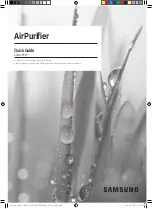
I/O MANUAL Horizontal/Modular/Vertical/Rooftop AHU 2015pg
.
16
COMMERCIAL AIRE PRODUCTS 501 Terminal Road, Fort Worth TX 76106
Tel: 817-624-0820
7) Replacing unauthorized components must be approved from the factory first, if not of the same part
number and style. Safety automatic and manual resets MUST be of the same temperature, part number
and vendor for proper heater operation. When higher rated temperature automatic/ manual resets are
replaced in the heater circuit, this will void the listing and warranty and could cause damage or result in
a fire.
8) Heater panel cover should not be removed or open during heater operation. Optimal operation of
heater requires cleanliness.
9) Check operation of heater circuits with thermostat/ controller to ensure proper cycling of heater
relays(s) and to the controller or thermostat set point.
10) If dust or other material is collecting on the heating elements, check filter(s) for replacement. The
heater may have to be removed from duct section for cleaning. Use low pressure air to remove dust
from heating element surfaces. Always wear eye protection and nose protection during this operation.
11) Do not try to repair any of the heater components, as they need to be replaced with original part
number from vendor for safe operation of the heater. Do not file down the relay(s) contacts to stop
relay chatter or to extend the life of the relay. Element male /female chassis insulators that are cracked
or broken should be replaced with the same style and size.
Insulators in the element support frame that are missing or broken must be replaced or replacement
frame assembly should be ordered. Broken heating elements must replace with the same element
gauge, ohms and outside diameter (O.D.) size.
12) Inspect all internal wiring in heater control panel for burned or broken wires. Replacement wiring
must be rated for 105 C grades and of the same gauge for proper operation of heater.
13) Preventative maintenance to achieve maximum performance and service life of heater, a formal
schedule of regular maintenance should be established and maintained.
DUCT CONNECTIONS
Check existing duct insulation and vapor barriers.
Previously installed heating supply ductwork may
already have adequate insulation against excessive heat loss. This insulation may be satisfactory for
protection against heat gain from summer cooling. Depending on application, it may require additional
insulation.
External insulated duct systems must have adequate vapor seal for summer operation, particularly
where duct is exposed to high humidity conditions such as in attic, vented crawl space, unconditioned
basement or utility room
.
Remove any shipping material from the unit before installing the duct. Be sure that there are no
material inside the unit that can damage the blower wheel when start running. Attach the duct to the
flanges provided on the unit. The installer is responsible for sealing the ducts to the flanges to prevent
any leak or contamination.
Ductwork should be sized according with the existing standards and installed following all the local and
national codes. When attaching the duct to the unit, use a flexible connection to avoid vibrations on the
duct. A three inches flexible connection is recommended.
CONDENSATE DRAIN PIPING
Our units are equipped with more than one drain connection. A p-trap and drain line must be installed
one the drain connections of the unit with a p-trap not to exceed 6” from the drain connection. The lines
should be the same size or larger than the drain connection, include a p-trap, and pitch downward
toward drain. An air break should be used with long runs of condensate lines.
Units include an overflow
drain pan to catch any overflowing condensation from the primary. This pan requires a separate ¾” or
1” condensate drains installation.
Draw-through units will have a negative static pressure in the drain
pan area; this will cause an un-trapped drain to back-up due to air being pulled up through the















































